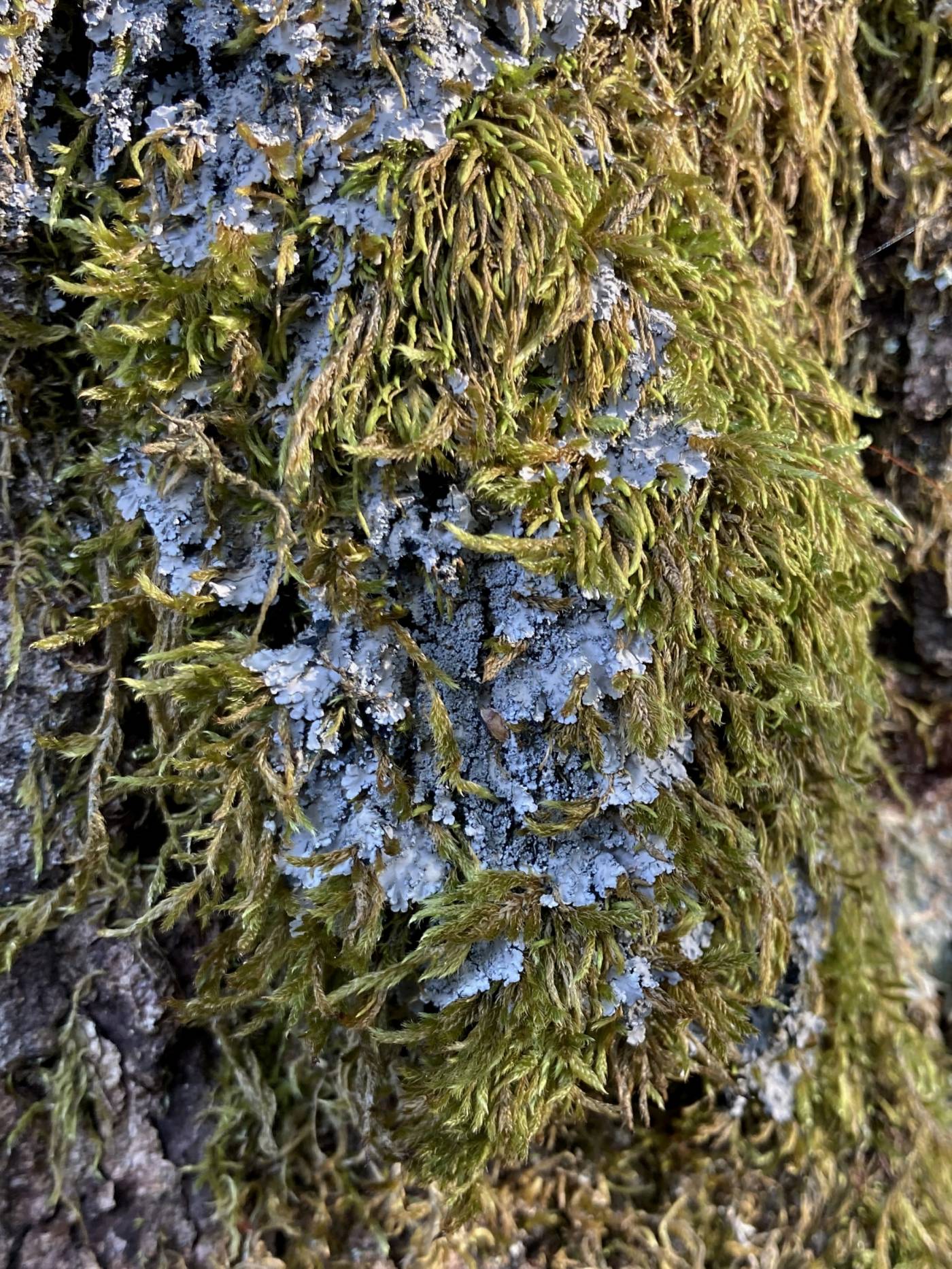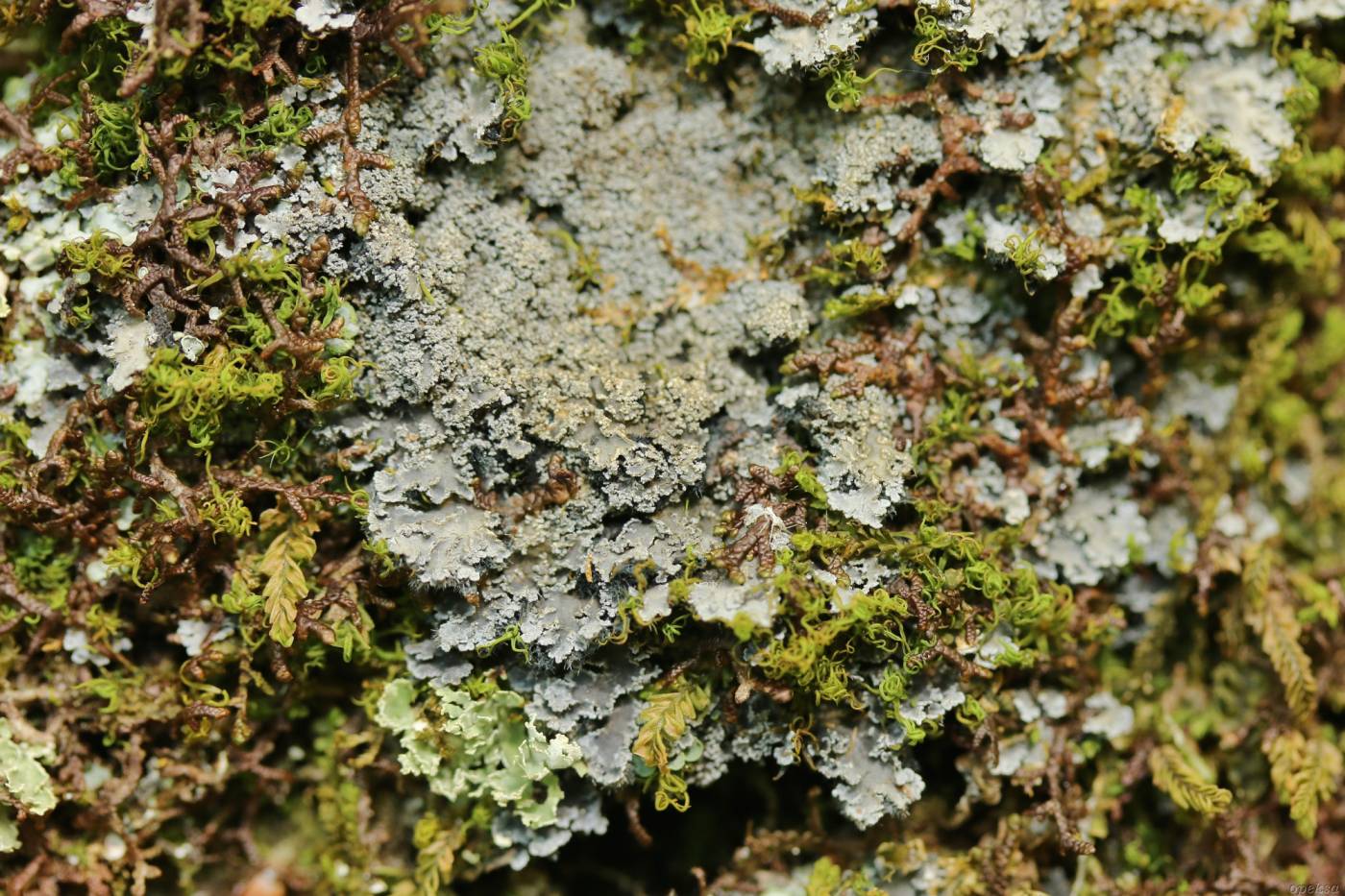A rather tiny cyanolichen, relatively conspicuous thanks to the blue-grey rosette thallus, composed of small lobes that carry (sorediate-) isidiate protuberances, so-called gymnidia. The species grows on mossy bark of deciduous trees or less often on mossy rocks. It is one of the suboceanic lichens from the Lobarion association linked to moist forest microhabitats, e. g. in old-growth forests. Pannaria conoplea is rare in central Europe except the Alps and from many places has already disappeared, which also applies to the Czech and Slovak Republics. In the past, the species was reported several times from the country, but except for two original sources (Rabenhorst 1870, Kovář 1908), these are closely unspecified or secondary citations (the oldest are from the Opiz era). Suza (1934) revised the record by Kovář from the Jeseníky Mts from the beginning of the 20th and indicated it as mistaken, thus the only historical record of the species is from the 19th century, from the closely unspecified locality in the surroundings of Karlovy Vary (Rabenhorst 1870) that was incorporated into the European distribution map of the species.
Literature: Rabenhorst L. (1870): Kryptogamen-Flora von Sachsen, der Ober-Lausitz, Thüringen und Nord-Böhmen mit Berücksichtigung der benachbarten Länder. – E. Kummer, Leipzig. Kovář F. (1908): Třetí příspěvek ku květeně lišejníků moravských. – Věstník Klubu přírodovědců Prostějov 11: 55–99. Suza J. (1934): Ozeanische Züge in der epiphytischen Flechtenflora der Ostenkarpathen (ČSR), bzw. Mitteleuropas. – Věstník Královské české společnosti nauk 1933/9: 1–43. Degelius G. (1935): Das ozeanische Element der Strauch- und Laubflechtenflora von Skandinavien. – Acta Phytogeographica Suecica 7: 1–411.
taxonomic classification:Ascomycota → Lecanoromycetes → Peltigerales → Pannariaceae → Pannaria
Red List (Liška & Palice 2010):RE – extinct
Red List (Malíček 2023):A – no recent data
Occurrence in the Czech Republic
All records: 0, confirmed 0. One click on a selected square displays particular record(s), including their source(s).

